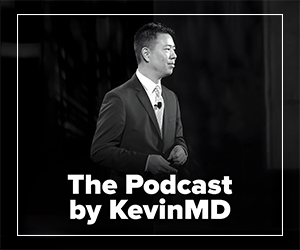Childhood obesity is not just about kids outgrowing their clothes faster than their parents can buy them— it’s a growing public health crisis. If we don’t step in now, the next generation might need bigger coats and even bigger health care budgets. Today, approximately one in five children and adolescents in the U.S. have obesity. The annual medical expenses related to childhood obesity in the U.S. is estimated at $1.3 billion. On average, health care costs for children with obesity is $116 more per year per child compared to those with a healthy weight.
No wonder the U.S. has one of the highest health care expenditures; yet only 8 percent of the population currently undergoes routine preventive screening. Consequently, the U.S. loses about $55 billion each year due to missed prevention opportunities. Preventive care is a cost-effective approach to reduce childhood obesity and it is crucial to reducing long-term health impacts: Education, screenings, counseling, and prophylactic medications are key strategies. In 2018, a MyPlate-focused intervention was formed for childhood obesity, known as MEND— mind, exercise, nutrition, do it! For ages 7–13, MEND is a 10-week program with family nutrition and activity sessions, plus two years of support. For ages 2–5, there are weekly sessions focused on active play, snack time, and parent education. We must support programs like MEND, which incorporate exercise, healthy nutrition, and behavioral adjustments to support safe, sustainable weight management and enduring lifestyle improvements.
Addressing childhood obesity requires a collaborative effort.
Addressing childhood obesity requires a collaborative effort across multiple sectors, including government agencies such as the United States Department of Agriculture (USDA), Center for Medicare and Medicaid Services (CMS), and the United States Preventive Services Task Force (USPSTF), policymakers and legislators, health care providers, and parents and families.
Government agencies have a vested interest in reducing childhood obesity rates as they set public health guidelines, fund nutrition programs, and support preventive care policies. For example, CMS determines which obesity-related health care services are covered under Medicaid and Medicare. The Patient Protection and Affordable Care Act (PPACA) expands coverage for obesity prevention services for children, such as screening and nutrition counseling. The USPSTF provides evidence-based health guidelines, and recommends obesity screening in children aged six and older with a high body mass index. Last, the USDA has several programs in place aimed at reducing childhood obesity, including the aforementioned MyPlate initiative. All three agencies—CMS, USPSTF, and USDA—are in alignment with PPACA health care preventive measures.
In addition to government agencies, policymakers and legislators also have a vested interest in the childhood obesity rate. State and local governments control funding, legislation, and policies affecting nutrition education, school meals, and health care access. Under PPACA, health care access was expanded through provision of obesity screenings for children in low-income areas. State and local governments are also essential in reducing childhood obesity rates through their influence on school meal programs, physical activity regulations, and food labeling policies. These agencies share the common goal of improving public health, and therefore align with PPACA’s policies.
Health care providers play a key role.
Health care providers who offer preventive health services for children, such as pediatricians, also play a key role. These practitioners are directly involved in offering screening services to identify at-risk children and are responsible for implementing education and counseling services to address the issue of obesity directly. These providers would generally be in favor of the PPACA’s efforts to expand access to preventive care, obesity screenings, and counseling services, with the goal of reducing childhood obesity rates and improving long-term health outcomes. Though it is important to note that incorporating additional screenings may increase provider workload, which may lead to opposition among some practitioners.
Families and parents are essential partners.
Finally, families and parents are perhaps the most critical of stakeholders in childhood obesity prevention. Parents and the home environment are key influences on a child’s diet and exercise habits. Family engagement in childhood obesity interventions, such as the MEND program, is essential to achieving lasting behavior change. Policies that provide nutrition education, increase access to affordable healthy foods, and promote preventive health care services would be beneficial to families. However, some parents may resist government intervention in food choices while others may experience barriers to the implementation of healthier lifestyles, such as cost or lack of access.
Political climate and future of prevention
The current political climate in the United States has many Americans wondering whether the government has their best interest in mind, particularly those who are the most vulnerable—their children. President Trump’s controversial cabinet pick for Secretary of Health and Human Services, Robert F. Kennedy Jr., has made American children’s diets an area of focus for the “Make America Healthy Again” initiative. This initiative expresses particular concern about ultra-processed foods, food ingredients, and the role they play in childhood obesity and chronic conditions. However, will this be another poorly executed attempt by Republicans to improve American health? Also, will federally funded programs like MEND be put at the forefront of addressing childhood obesity?
14.7 million U.S. children aged 2–19 are obese, but in 2017, House Republicans proposed the American Health Care Act (AHCA) which aimed to take away guaranteed preventive care coverage for children and reverse nutritional guidelines mandated by the PPACA. The AHCA would no longer require nutrition labels to be posted on food packaging and proposed eliminating federal funding for community-based wellness programs, making it harder for parents and children to make informed decisions about nutrition and health. The act would also remove coverage of obesity screenings and counseling for children. Today, politicians on the right claim to belong to the party committed to protecting American children, but historically, their policies have failed to reflect this.
Prevention must be a national priority.
Prevention and wellness are essential to addressing childhood obesity and must be a national priority. The PPACA’s emphasis on preventive care, nutrition transparency, and community wellness has laid the foundation for addressing this public health issue. Early education, accessible screenings, and healthier food choices are critical in preventing chronic conditions related to obesity. We urge policymakers to uphold the PPACA provisions to ensure all children have access to the education and resources they need to live healthier lives, as in the MEND program. Investing in childhood obesity prevention today is an investment in the future health and well-being of our nation and would significantly improve health disparities, especially for vulnerable children and families. Without action, we risk a future where the iconic Tommy Boy scene of “fat guy in a little coat” is no longer just a moment of comedy, but a sobering reflection of our public health crisis.
Morgan Frasier and Saba Qaiser are nurses. Kellye Koubek and Karen Nicole Salazar are nurse practitioners.



















![Collaborative partnerships save rural health care from collapse [PODCAST]](https://kevinmd.com/wp-content/uploads/Design-3-190x100.jpg)
